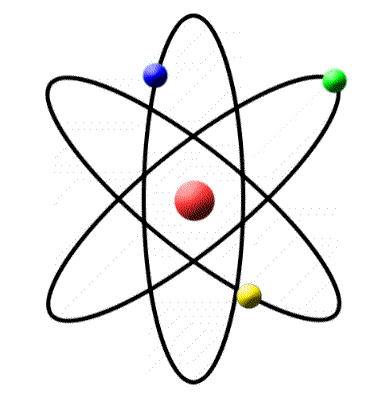The masses of two radioactive substances are same and their half lives are $1$ year and $2$ years respectively. The ratio of their activities after 6 years will be
- 1:04
- 1:02
- 1:03
- 1:06
The Correct Option is A
Solution and Explanation
$\therefore R=R_{0}\left(\frac{1}{2}\right)^{n}=R_{0}\left(\frac{1}{2}\right)^{t / t_{1 / 2}} $
$\Rightarrow \frac{R_{1}}{R_{2}}=\frac{\left(\frac{1}{2}\right)^{4 / 1}}{\left(\frac{1}{2}\right)^{4 / 2}}=\frac{\left(\frac{1}{2}\right)^{4}}{\left(\frac{1}{2}\right)^{2}}=\left(\frac{1}{2}\right)^{2} $
$\Rightarrow \frac{R_{1}}{R_{2}}=\frac{1}{4}$
Top Questions on Atoms
- Prove that, in the Bohr model of the hydrogen atom, the time period of revolution of an electron in the \( n \)-th orbit is proportional to \( n^3 \).
- The distance of closest approach of an alpha particle from a nucleus when the alpha particle moves towards a nucleus with a kinetic energy 'E' is 'x'. The distance of closest approach when the alpha particle approaches the same nucleus with kinetic energy 0.4E is
- The ratio of frequencies of second line of Lyman series and third line of Balmer series of hydrogen atom is:
- The ratio of wavelengths of second line in Balmer series and the first line in Lyman series of hydrogen atom is
- Describe the atomic model of Rutherford. How did Bohr model removed its drawbacks?
Questions Asked in KCET exam
- At 27°C temperature, the mean kinetic energy of the atoms of an ideal gas is \( E_1 \). If the temperature is increased to 327°C, then the mean kinetic energy of the atoms will be
- KCET - 2025
- simple harmonic motion
- A potential at a point A is 3 V and that at another point B is 5 V. What is the work done in carrying a charge of 5 mC from B to A?
- KCET - 2025
- Electric Field
The circuit shown in the figure contains two ideal diodes \( D_1 \) and \( D_2 \). If a cell of emf 3V and negligible internal resistance is connected as shown, then the current through \( 70 \, \Omega \) resistance (in amperes) is:

- KCET - 2025
- Refractive index
- The mean deviation about the mean for the data \( 4, 7, 8, 9, 10, 12, 13, 17 \) is:
- KCET - 2025
- measurement of angles
- The distance of the point \( P(-3,4,5) \) from the yz-plane is:
- KCET - 2025
- Distance of a Point From a Line
Concepts Used:
Atoms
- The smallest unit of matter indivisible by chemical means is known as an atom.
- The fundamental building block of a chemical element.
- The smallest possible unit of an element that still has all the chemical properties of that element.
- An atom is consisting of a nucleus surrounded by one or more shells of electrons.
- Word origin: from the Greek word atomos, which means uncuttable, something that cannot be divided further.
All matter we encounter in everyday life consists of smallest units called atoms – the air we breath consists of a wildly careening crowd of little groups of atoms, my computer’s keyboard of a tangle of atom chains, the metal surface it rests on is a crystal lattice of atoms. All the variety of matter consists of less than hundred species of atoms (in other words: less than a hundred different chemical elements).

Every atom consists of an nucleus surrounded by a cloud of electrons. Nearly all of the atom’s mass is concentrated in its nucleus, while the structure of the electron cloud determines how the atom can bind to other atoms (in other words: its chemical properties). Every chemical element can be defined via a characteristic number of protons in its nucleus. Atoms that have lost some of their usual number of electrons are called ions. Atoms are extremely small (typical diameters are in the region of tenths of a billionth of a metre = 10-10 metres), and to describe their properties and behaviour, one has to resort to quantum theory.